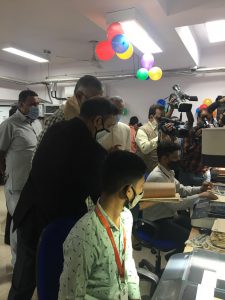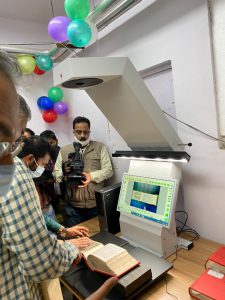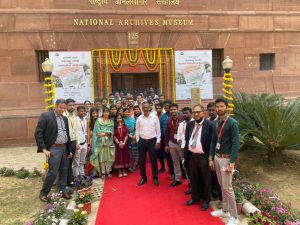The World News Media Congress 2025 (WNMC25) in Kraków has officially concluded, leaving behind a wealth of insights that continue to shape how we view the intersection of journalism and technology. As proud sponsors of the event, Ninestars had the opportunity to engage with the brightest minds in media and technology, gaining invaluable perspectives that are driving the future of news.
The Congress highlighted a new wave of media transformation, driven by technological innovation, AI integration, and a renewed focus on providing real value to audiences. These advances are not just improving the quality and efficiency of news production but are also setting the stage for a media landscape where personalization, audience engagement, and ethical AI take centre stage.
AI and the Transformation of Newsrooms
A big theme of WNMC25 was the integration of AI in journalism, an undeniable trend that has moved beyond speculation and into action. AI is no longer a buzzword or a distant possibility; it is being embedded in the day-to-day operations of newsrooms worldwide. From editorial workflows to content creation, AI is playing an increasingly pivotal role in how stories are told and consumed.
One of the most profound insights from the Congress was the increasing reliance on Generative AI. Speakers shared real-world examples of how this technology is already streamlining content creation, improving productivity, and expanding audience reach. AI tools are now integral in supporting editorial decisions, from helping journalists gather data to automating repetitive tasks. The focus is clear: AI must be implemented in a way that enhances editorial workflows and maintains the values of trust and accuracy, which are the bedrock of quality journalism.
At Ninestars, we’re proud to align with this vision. Our AOTM Intelligent Automation Platform is designed to empower newsrooms with the speed and precision they need to process vast volumes of content. With AOTM OCR (Optical Character Recognition) and AOTM ICP (Intelligent Content Processing), we’re helping newsrooms handle information faster and more accurately, which ultimately allows them to focus on what matters: producing high-quality journalism.
AI’s Role in Personalized Journalism
Personalization is no longer just a luxury for newsrooms; it’s a necessity. As AI continues to evolve, it provides new opportunities to tailor content to the specific preferences and behaviours of individual readers. During the congress, the idea of audience-centric strategies was discussed in depth. News organizations are increasingly leveraging AI to deliver personalized experiences that engage readers at a deeper level. This means not just creating content that is relevant, but making sure it resonates at a personal level.
For example, AI-driven personalization is allowing publishers to adjust the content they provide based on data, whether it’s user behaviour, geographic location, or even social trends. Short-form content is also becoming more influential in reaching younger audiences, especially Gen Z, who demand quick, digestible news that fits into their daily lives.
Ninestars is fully committed to empowering publishers with these AI-driven personalization strategies. Our solutions help streamline content processing, automate repetitive tasks, and deliver deep insights that make it easier to engage audiences in meaningful ways.
Ethics, Trust, and the Future of Journalism
The conversations at WNMC25 weren’t just about technology; they also focused on the broader ethical implications of AI in journalism. As AI becomes more ingrained in newsrooms, ensuring that it supports the values of trust, transparency, and editorial independence is crucial. The term Authentic Intelligence emerged as a key theme, emphasizing the need for AI to be used responsibly in ways that bolster the integrity of journalism rather than undermine it.
Industry leaders like Ingrid Verschuren from Dow Jones and Tom Rubin from OpenAI highlighted the importance of grounding AI in strong ethical frameworks. They stressed that AI should empower journalists, not replace them, and that AI systems should be transparent, accountable, and aligned with the values of responsible journalism. These conversations were important in reminding us that as AI becomes more advanced, we must be vigilant in maintaining the trust of our audience.
At Ninestars, we are committed to developing AI solutions that respect these ethical considerations. Our platform is designed to automate and streamline processes while upholding the principles that make journalism a trusted source of information and perspectives. From responsible data usage to transparency in AI decision-making, we ensure that our technology supports the greater good of the industry.
Looking Ahead: A Smarter, More Efficient Future
As WNMC25 wrapped up, the focus was clear: The future of journalism will be defined by AI, but it’s how we use it that will determine its impact. AI is not just about efficiency; it’s about improving quality, enhancing the audience experience, and enabling news organizations to focus on what they do best: telling great stories.
As Ninestars continues to work alongside media companies, we are proud to be part of this transformation. We are actively building solutions that not only help publishers streamline their workflows but also foster stronger connections with their readers. The future of media is bright, and with AI as an enabler, newsrooms can rise to the challenge of staying relevant in an increasingly digital world.
The World News Media Congress 2025 was a powerful reminder of the importance of AI in shaping the future of journalism. From enhancing editorial workflows to creating personalized experiences, AI is helping newsrooms embrace the future while staying true to their core values. As the event concluded, it was clear that the momentum toward AI-driven innovation in media is only going to grow stronger.
We’re excited to continue our journey with the media industry, working hand-in-hand with publishers to build a smarter, more efficient future for journalism. Thank you to everyone who shared their insights and helped shape these important conversations. The journey has just begun, and at Ninestars, we are ready to continue making an impact.
TL;DR
Key Insights from WNMC 2025
- Generative AI is revolutionizing content creation, enabling newsrooms to streamline processes, boost productivity, and improve engagement.
- Personalized journalism is now a strategic necessity, with AI allowing publishers to create tailored content that resonates with individual audiences.
- Ethical AI remains a focal point, with leaders emphasizing the need for AI to enhance, rather than replace, journalistic integrity and trust.
- AI is already transforming newsrooms by enhancing editorial workflows and content creation.
Discover how Ninestars is helping newsrooms thrive in the digital age: Explore here



















